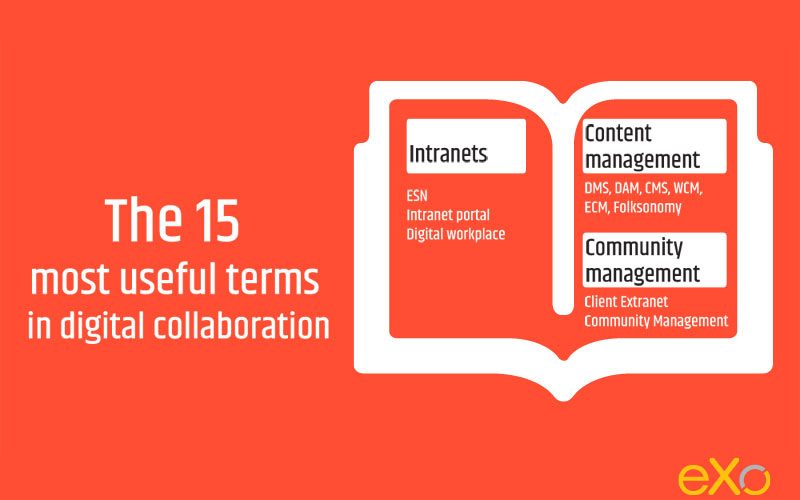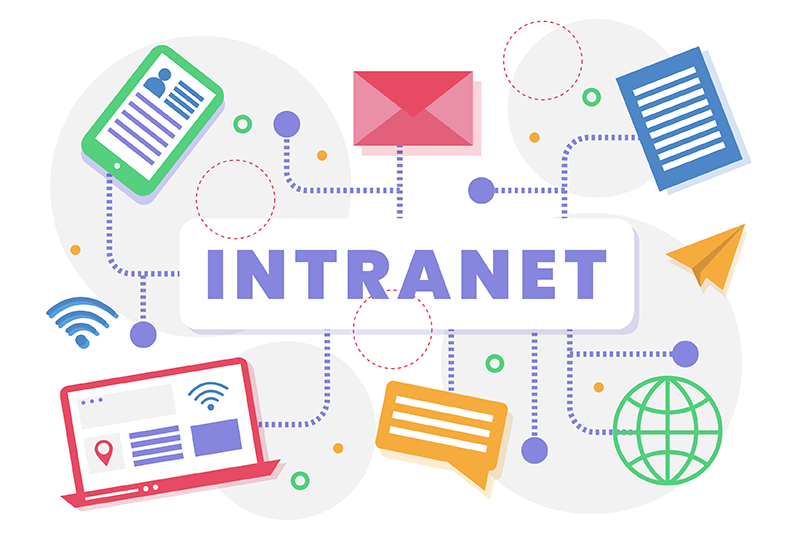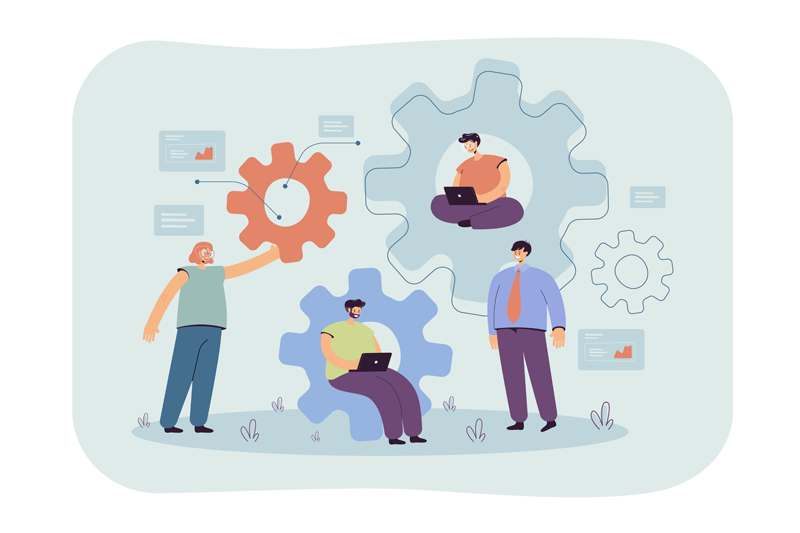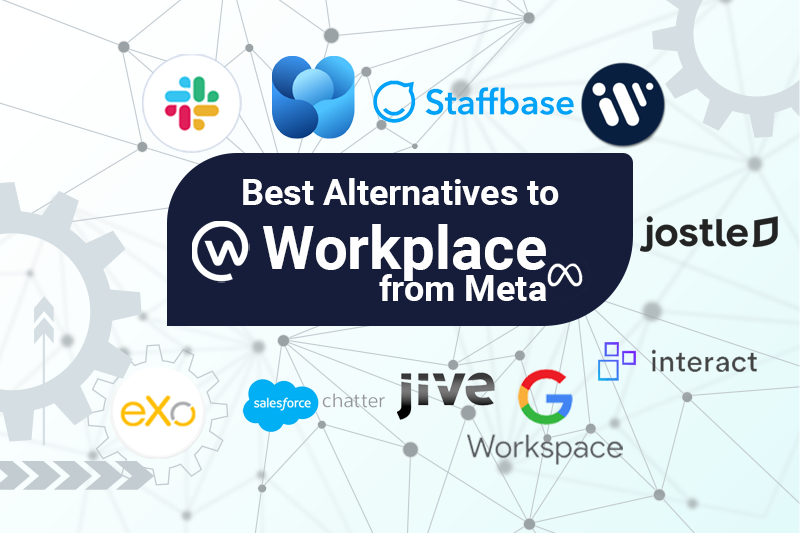- Brahim Jaouane
- October 13, 2016
The 15 most useful terms in digital collaboration

Content
Intranets
1. Company Intranet
2. Intranet portal: A traditional Intranet
3. Modern Intranet, Social Intranet, Collaboration Platform and Digital Workplace
4. ESN – Enterprise Social Network
6. Asynchronous vs synchronous (real-time) communication
Synchronous (real-time) communication happens when you call or chat with someone.
7. Digital Collaboration
company intranet
Content Management
8. DMS – Document Management System
9. DAM – Digital Asset Management
10. CMS / WCM – Content Management System / Web Content Management
11. ECM – Enterprise Content Management
12. Taxonomy and Folksonomy
These terms are used in relation to a DMS. Taxonomy means classifying documents into categories (in a file system). Folksonomy is a user-generated system, through tags.
13. KM – Knowledge Management
Community Management
14. Client Extranet
15. Community Management Software
FAQ
You will find here Frequently Asked Questions about collaboration with all the answers in one place.
What is collaboration?
Collaboration is “the situation of two or more people working together to create or achieve the same thing”.
What are the different types of collaboration in business?
Here are some definitions of digital workplace:
- Team collaboration
- Cross-departmental and interdisciplinary collaboration
- Community collaboration
- Strategic partnerships and alliances
- Supply chain collaboration
How to choose the best type of collaboration?
In order to effectively find the right type of collaboration for your business, you have to follow a strategic approach and answer three common yet critical questions: Where are we? Where do we want to be? And how to get there?
Why collaboration is important?
At the internal level, businesses try to encourage and seek to incorporate different forms of collaboration in the workplace to lay the foundations for teams to be able to work together with an aim to achieve higher levels of success.
Externally, businesses look to engage in collaborative actions to benefit from others’ expertise, to gather the opinions of their customer base and to get customers and other stakeholders more involved in the development of products and services.
What are the benefits of collaboration in the workplace?
Here are some of the benefits of collaboration in the workplace:
- Foster innovation and creativity
- Better problem solving
- Effectively handle times of crises
- Engage and align teams
- Increase motivation
- Attract talents
- Tags: Digital workplace, Collaboration, Tutorial

Related posts
- All
- eXo
- Digital workplace
- Employee engagement
- Open source
- Future of work
- Internal communication
- Collaboration
- News
- intranet
- workplace
- Knowledge management
- Employee experience
- Employee productivity
- onboarding
- Employee recognition
- Change management
- Cartoon
- Digital transformation
- Infographic
- Remote work
- Industry trends
- Product News
- Thought leadership
- Tips & Tricks
- Tutorial
- Uncategorized



5. Social Collaboration